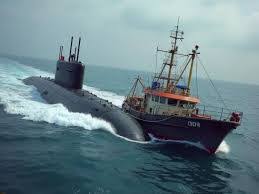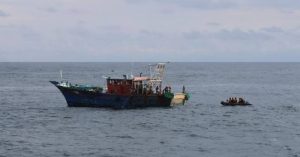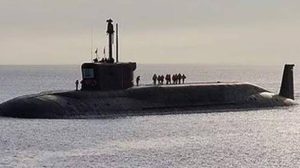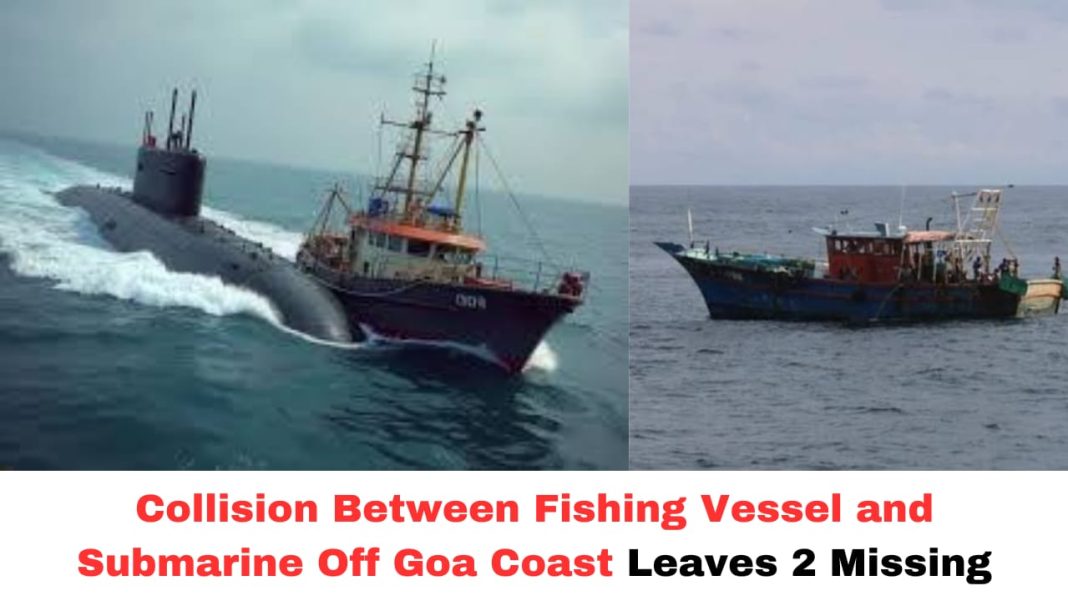Digital News Guru Goa Desk:
A grave maritime incident unfolded late Thursday night, November 21, 2024, when a fishing vessel collided with an Indian Navy submarine off the coast of Goa. The collision occurred about 70 nautical miles northwest of the coastal state during the Sea Vigil 24, a nationwide coastal defense exercise. The fishing trawler Marthoma was carrying 13 crew members, of whom 11 were rescued. Efforts are ongoing to locate the two missing individuals, with the Navy and Coast Guard leading the search and rescue operations.
Details of the Incident
The Marthoma, a fishing vessel operating in the Arabian Sea, collided with a Scorpene-class submarine, which is a key component of India’s naval fleet. Known for their advanced stealth capabilities and equipped with long-range guided torpedoes and anti-ship missiles, these submarines are central to India’s maritime defense strategy. Despite their sophisticated technology, the fishing vessel’s proximity went unnoticed until the collision occurred. The Navy has launched a high-level investigation to ascertain the circumstances surrounding this breach.

The accident occurred as the submarine was surfacing, transitioning from a submerged operational state following its participation in Sea Vigil 24. This exercise, aimed at enhancing India’s coastal defense mechanisms, involved multiple government agencies, including six ministries and 21 state and central security organizations. Its expansive scope included the entire 11,098-kilometer coastline and an exclusive economic zone stretching 2.4 million square kilometers.
Rescue Efforts
Following the collision, the Indian Navy initiated a massive search and rescue operation. Six naval ships and multiple aircraft have been deployed to the area, coordinating efforts with the Maritime Rescue Coordination Centre (MRCC) in Mumbai. Local fishing communities and coastal police forces have joined the mission, reflecting a collaborative approach to handling maritime emergencies.
An Indian Navy spokesperson highlighted that additional assets, including Coast Guard ships, have been diverted to augment the ongoing rescue mission. The search is taking place in challenging conditions, with rough seas and poor visibility complicating efforts. The Navy has assured the public of its commitment to finding the missing fishermen and conducting a transparent investigation.

Broader Implications for Maritime Security
This collision has sparked significant concerns about safety protocols and operational readiness in India’s maritime defense. The incident has drawn criticism from experts and retired naval officers, who point to potential gaps in both technology and procedural rigor. The inability to detect a fishing vessel, particularly during a high-stakes defense exercise like Sea Vigil 24, has been viewed as a lapse in coastal defense protocols.
This accident adds to a troubling pattern of naval mishaps along India’s western coastline over the past decade. Previous incidents include fires, collisions, and explosions aboard various naval vessels, such as the deadly fire on INS Sindhurakshak in 2013, which claimed 18 lives, and a collision involving INS Talwar in 2013 with another fishing trawler.
Scorpene-Class Submarines: A Strategic Asset
The Scorpene-class submarine involved in the accident represents a cornerstone of India’s naval modernization efforts. Built under Project 75 in collaboration with France, these diesel-electric submarines are designed for diverse operations, including anti-surface and anti-submarine warfare, intelligence gathering, and mine-laying. Their stealth features and low acoustic signature make them highly effective in combat scenarios but also demand rigorous operational protocols to avoid incidents like this collision.
While the Navy has not disclosed details about any damage sustained by the submarine, its involvement in such a collision during a routine exercise has raised questions about the challenges of operating advanced naval assets in India’s maritime environment.
Maritime Safety and the Way Forward
The collision underscores the urgent need for enhanced maritime safety measures and better coordination between civilian and military vessels. Experts suggest that integrating advanced surveillance systems and ensuring strict adherence to navigational protocols are critical to preventing such incidents. Additionally, increasing the Navy’s engagement with the fishing community to raise awareness about naval operations and potential hazards could help mitigate risks in shared waters.

India’s maritime security apparatus has been under scrutiny, particularly given its strategic focus on securing critical sea lanes and combating transnational threats like piracy and smuggling. Incidents like this could undermine public confidence in the Navy’s ability to safeguard national waters. The government and the Navy must address these concerns transparently and take corrective measures to ensure operational excellence.
Conclusion
The collision between the Marthoma fishing vessel and an Indian Navy submarine is a tragic reminder of the complexities and risks inherent in maritime operations. As search and rescue operations continue for the missing fishermen, the incident has cast a spotlight on the pressing need for improved coordination and safety protocols in India’s maritime domain.
While the Navy’s efforts in conducting a thorough investigation are commendable, the focus must remain on learning from this incident to prevent similar occurrences in the future. Balancing national security imperatives with the safety of civilian maritime operators will be crucial as India advances its naval capabilities and maritime strategy.
You May Also Read: The Gateway of India: Mumbai’s Icon of History, Culture, and Architecture








